by Mike Wharton
Part 6 The History of the Digital Computer
Ever since man has had a need to count, he has devised a variety of aids
in order to speed his calculations. One of the earliest such devices is the
abacus, still used
today as a form of mechanical calculator. Thus the modern computer could
be thought of as a glorified type of abacus, but one which is infinitely
more versatile in the way in which it is able to manipulate data.
Before the introduction of effective computing aids, the preparation of logarithm
tables required the organisation of large teams of human computers. In 1874
the French government decided to have a new set of logarithm and
trigonometric tables prepared. A team of six mathematicians were used to
supervise the work of seven or eight 'calculators' who handed out work to
around eighty 'computers'. Each calculation was double checked and it took
2 years to complete the work. The results were not printed, since this would
have introduced too many errors.
CHARLES BABBAGE
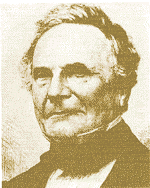 Most
tables, even in the 19th century, contained many errors. For instance,
the British Nautical Almanac, which had a high reputation, was still found
to contain 58 mistakes in the 1818 edition, Charles
Babbage and John Herschel were in Babbage's rooms at Cambridge checking
some calculations which they suspected contained errors. "I wish to God these
calculations had been executed by steam!" exclaimed Babbage. "It is quite
possible," remarked Herschel. This set Babbage, now regarded as the founding
father of computers, to thinking of the design for an automatic calculating
machine.
Most
tables, even in the 19th century, contained many errors. For instance,
the British Nautical Almanac, which had a high reputation, was still found
to contain 58 mistakes in the 1818 edition, Charles
Babbage and John Herschel were in Babbage's rooms at Cambridge checking
some calculations which they suspected contained errors. "I wish to God these
calculations had been executed by steam!" exclaimed Babbage. "It is quite
possible," remarked Herschel. This set Babbage, now regarded as the founding
father of computers, to thinking of the design for an automatic calculating
machine.
The first adding machine had been made by Blaise Pascal in 1642, when
he was just nineteen. 30 years later, Gottfried Leibnitz improved on the
original idea and made a machine which could add, subtract, multiply and
divide. The mechanism he designed was still in use in some of the mechanical
calculators produced in this
century.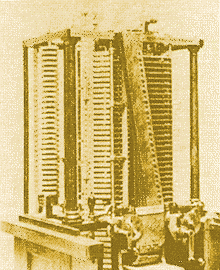
All of the work done by Pascal seems to have gone largely unheeded, for it
was not until some years later that Babbage produced a working model of what
he called his Difference Engine. Pascal had invented a mechanism consisting
of a series of wheels with figures engraved on them and so interlocking that
the operation could be carried out manually by turning the wheels one at
a time, carry-overs being effected from one wheel to the next but it was
a very cumbersome machine.
In Babbage's Difference Engine only integers, or whole numbers were
considered, but negative numbers were represented by their arithmetic complement
as in today's computers. In 1822, he produced a working model of a simpler
machine for which he received a Gold Medal from the Astronomical Society.
This recognition of his work encouraged him to pursue his goal further and
make a start on his scheme for a larger machine. For this, he was granted
an award of £1,500 from the Treasury in order to finance the work, for
he had managed to persuade some influential friends that his scheme was a
viable proposition. Unfortunately, their enthusiasm was short-lived, for
the machine could not be made to work properly and it was eventually
shelved.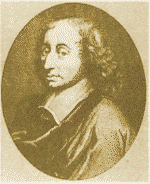
However, Babbage was undaunted by this early failure, having realised during
the time spent on the original ideas that a far superior form of calculating
machine could be built, using similar principles. It must say something of
the character of the man that he was able to commence this second project
without ever having really overcome the problems inherent in the first design.
His conception was for a machine which he called his Analytical Engine. Here,
it was intended that results generated in one part of the machine would be
used as the inputs to other parts, or as Babbage described it, "to eat its
own tail." Again,here is an idea which pre-empts the operation of the modern
electronic
computer.
The Analytical Engine was to consist of three main parts:-
1 The Store: where numbers were to be held for transferring to the Mill.
2. The Mill: where all the arithmetic operations would be carried out.
3. The Printing Mechanism: which would print out the results of the calculations.
Numbers were to he held in mechanical registers m the Mill. Upon activation,
the processes of addition, subtraction, multiplication and division were
carried out. The 'program', which had to control the sequence of operations,
was stored on punched cards, an idea borrowed from the silk weaving loom
invented by Jacquard earlier in the century. This is not a stored program
in the modern sense, for the program was stored in a different form from
the variables. However, it was possible for a jumping in the sequence of
cards to be performed, like the branching of a modern program.
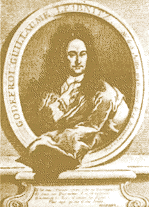 In 1842, the Government decided that they were no longer going
to support his efforts, and the project was abandoned by them and left entirely
to Babbage. This was brought about nil as a result of arguments between him
and the instrument makers employed to make the parts for the Engine; Babbage
was continually improving and refining his ideas which meant that new parts
were ordered before the first ones had been finished or paid for by the Treasury.
In 1842, the Government decided that they were no longer going
to support his efforts, and the project was abandoned by them and left entirely
to Babbage. This was brought about nil as a result of arguments between him
and the instrument makers employed to make the parts for the Engine; Babbage
was continually improving and refining his ideas which meant that new parts
were ordered before the first ones had been finished or paid for by the Treasury.
At this point, a lady by the name of Ada Augusta, Countess of Lovelace
appears on the scene. She was in fact the only daughter of the poet Byron
and his wife Anabella and had made the acquaintance of Babbage as the result
of attending one of his lectures in Edinburgh in 1834. Surprisingly, she
was a lady of quite remarkable mathematical ability, at one time having been
given tuition by a Professor de Morgan, whose name should be recognised by
anyone who has ventured into the realms of
electronic
logic. She arranged a meeting with Babbage and persuaded. him to continue
his work, which would be financed by the money she intended to win by backing
horses according to a scheme based on mathematical probability! Inevitably,
the scheme failed and Countess Lovelace twice had to pawn the family jewels
to pay the bookmakers. After she died in 1852, Babbage continued with his
quest which had long since become an obsession with
him.
He was, unfortunately, way ahead of his time, for his ideas could not be
put into practice in the mechanisms which could be built with the available
technology. His original Difference Engine was destined to become a museum
piece, but somewhat surprisingly a Swedish printer named Scheutz had made
a simplified version after reading an account in the Edinburgh Gazette of
the same lecture that the Countess had attended. Another model was also made
by Donkin in London which was actually used by the Registrar-General's Department
for the computation of statistical tables.
Charles Babbage lived to a ripe old age, dying in 1871 at the age of 80.
During the later years of his life, he still continued to tinker with computing
machines but he must have felt very sad and disillusioned that his far-sighted
vision had not been put into practice. Indeed, it was not until a hundred
years later that his prophetic vision eventually came to fruition in the
shape of the microprocessor.
Herman Hollerith
For many years after the death of Babbage, little or no interest was to be
shown in the idea of mechanical computation, until the advent of the electrical
systems. The use of electricity as the 'driving force' allowed much greater
versatility and removed the need for precision engineering which had always
been the major obstacle facing Babbage. Some of the earliest schemes, in
fact, took over some of the ideas which had been pioneered by him but using
electro mechanical devices rather than cogs and gears. One of the first of
these machines which was eventually to lead to the conception of the modern
computer was invented by an American named Herman Hollerith. He was given
the task of collating all the statistical information gathered during the
American census of1890.
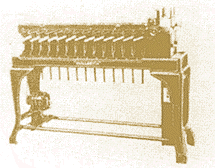 The method he used was based on the same idea Babbage had
incorporated for storing his programs, that of the punched card. Hollerith
devised a machine where metal pins arranged in a matrix could make contact
with a pad if a hole had been punched in the appropriate position in the
card. Each pin formed part of an electrical circuit, connected in turn to
a simple counter. Operators placed the cards in the pin- presses, closed
the lid and a counter automatically notched up one more piece of information.
The machines were such a success that the results of the census were able
to be published in 2½ years, whereas the previous one had taken seven.
In 1896, Hollerith set up the Tabulating Machine Company to exploit the
commercial aspects of his census machine and in 1911, a Hollerith machine
was used for the British census. Eventually this company merged with others
to become the International Business Machines (I.B.M) Corporation
in 1924.
The method he used was based on the same idea Babbage had
incorporated for storing his programs, that of the punched card. Hollerith
devised a machine where metal pins arranged in a matrix could make contact
with a pad if a hole had been punched in the appropriate position in the
card. Each pin formed part of an electrical circuit, connected in turn to
a simple counter. Operators placed the cards in the pin- presses, closed
the lid and a counter automatically notched up one more piece of information.
The machines were such a success that the results of the census were able
to be published in 2½ years, whereas the previous one had taken seven.
In 1896, Hollerith set up the Tabulating Machine Company to exploit the
commercial aspects of his census machine and in 1911, a Hollerith machine
was used for the British census. Eventually this company merged with others
to become the International Business Machines (I.B.M) Corporation
in 1924.
Electro-Mechanical Computers
By 1937, interest in automatic computation, which had
lain dormant since Babbage's death, began to revive.
Alan Mathison Turing, a mathematician work ng
in Britain, had published a paper which defined very precisely his concept
of a 'universal computer'. He also put forward the idea of machines teaching
themselves by a process of trial and error; another of his insights was not
to prove so well informed, since he predicted that there could not be more
than about half a dozen computers in the country because of the need for
highly trained mathematicians to operate them.
In the same year, Howard Aiken of Harvard University used the principle of
the punched card tabulator and similar components used in telephony to build
an automatic computer of the type envisaged by Babbage. Aiken approached
I.B.M for assistance, as the components he needed were already being used
by them. Over the next seven years, he and a team of engineers built the
Automatic Sequence Controlled Calculator which was presented to Harvard in
1944. This machine, also known as the Harvard Mk. I, was an enormous beast,
51 feet long, 8 feet high, weighing 5 tons and containing 500 miles of wire.
It took around 1 second to perform an addition and 10 seconds for division.
The life of these relay based machines was short, for by 1946, the first
electronic machines had been built and demonstrated, working at a speed 1000
times faster than the best relay machine could achieve.
Computers using Valves
In a way, it is surprising that it took so long for the electronic computer
to arrive The triode valve had been invented in 1906 by Lee de Forest, and
in 1919 Eccles and Jordan had devised a circuit which allowed a pair of these
valves to act as a
bistable
flip-flop. The first electronic, as opposed to electro mechanical, computer
was designed and built by John Mauchly and I. Presper Eckert of the Moore
School of Electrical Engineering at the University of Pennsylvania, Eckert
being particularly responsible for the design of a ring counter. It was actually
made for the US Government, and was completed in 1946, only 2 years
after Aiken's. This new computer of Mauchly and Eckert was called ENIAC,
standing for Electronic Numeric Integrator and Calculator. It was also a
vast machine, 100 feet long, consuming 100kW of power and contain ing 18,000
valves!
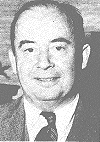 Data Handling and Storage
Data Handling and Storage
All of these machines held values in decimal form, but in1946, John von Neumann
swept up a number of thoughts that went right back to Leibnitz and brought
into existence the modern concept of programming. Leibnitz had foretold of
the advantages of using the binary scale and this had been taken up in the
mid-nineteenth century by George Boole (who gave us
Boolean Algebra).
Neumann recognised the advantages of the binary system because the two states
needed to perform binary operations were easily provided in electronic terms
by opening or closing a switch. Still more important was Neumann's recognition
of what Babbage had called 'judgement' - the ability of the machine to modify
its course of action according to results obtained. The Neumann concept of
the stored program machine demanded a much larger storage capacity than was
available on these automatic calculators. He estimated that such a machine
would need a store able to hold 1000 numbers. Some of the features of the
von Neumann concept had actually been anticipated by Alan Turing, and quite
remarkably by one Konrad Zuse. His work in war-time Germany had produced
an electronic machine in 1941 but his achievements went unrecognised until
1947.
Over the subsequent years many forms of data storage were evaluated, including
the magnetic drum, a cathode ray tube store and magnetic core stores. Most
of these have been superseded by the semiconductor storage devices which
have become so prominent in recent years. Perhaps public interest in computers
first arose as a result of the correct prediction by a UNIVAC machine
that General Eisenhower would win the 1952 US Presidential election. This
also sparked off the discussion as to whether such machines could think.
As it happens, lady Lovelace had dealt with that question 110 years earlier,
when she wrote "the Analytical Engine has no pretensions to originate anything;
it can only do what we know how to order it to perform.
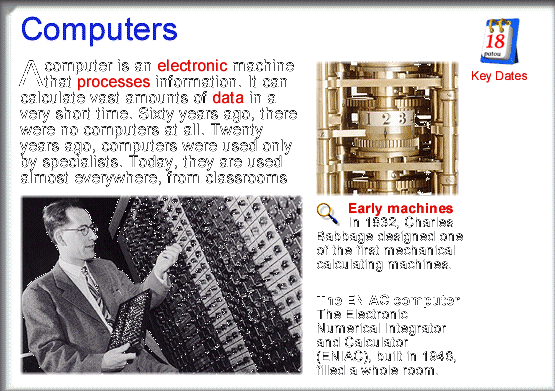 |
The Microprocessor
The development of the
digital computer
over the last 30 years has really been synonymous with developments
in semi-conductor technology. From the invention
of the transistor at Bell Telephone Labs in 1947, the rate of progress has
been ever quickening. In 1968, Jack Kilby, then working at Texas Instruments,
produced the first 'integrated circuit', which contained just a couple
of transistors on a chip about 1 centimetre square. A few years later, the
first 'microprocessor' chip appeared. This came about as a result of some
lateral thinking on the part of the team at Intel who were producing calculator
chips. It was realised that it would make more sense to produce a single
device which could be programmed to do different jobs, rather than a number
of dedicated devices.
Since then, ever more powerful devices have been produced with associated
improvements in all manner of silicon support devices, from ROMs to RAM's
and everything in between! This pace of development seems to show no sign
of halting and the next step will probably be towards silicon systems, with
all the back up store contained in non-volatile RAM. One particular development
in this direction is the wafer- scale integration which Sinclair are known
to be working on. Here, individual chips are left all together as a wafer,
rather than being individually packaged. The main problem is that software
accessing of these devices will need to be adaptive in order to avoid any
defective locations within the interconnected chips. By this means, it is
anticipated that a silicon 'disk' of up to 3 megabytes could be produced
but without any of the usual hardware.
This brings to a conclusion this series of Electronic Chronicles; if nothing
else, it will hopefully have shown that the field of electronics has always
been varied and exciting, and promises to be ever more so.
Electronics The MAPLIN magazine Sep-Nov
1985
 Most
tables, even in the 19th century, contained many errors. For instance,
the British Nautical Almanac, which had a high reputation, was still found
to contain 58 mistakes in the 1818 edition, Charles
Babbage and John Herschel were in Babbage's rooms at Cambridge checking
some calculations which they suspected contained errors. "I wish to God these
calculations had been executed by steam!" exclaimed Babbage. "It is quite
possible," remarked Herschel. This set Babbage, now regarded as the founding
father of computers, to thinking of the design for an automatic calculating
machine.
Most
tables, even in the 19th century, contained many errors. For instance,
the British Nautical Almanac, which had a high reputation, was still found
to contain 58 mistakes in the 1818 edition, Charles
Babbage and John Herschel were in Babbage's rooms at Cambridge checking
some calculations which they suspected contained errors. "I wish to God these
calculations had been executed by steam!" exclaimed Babbage. "It is quite
possible," remarked Herschel. This set Babbage, now regarded as the founding
father of computers, to thinking of the design for an automatic calculating
machine.



 In 1842, the Government decided that they were no longer going
to support his efforts, and the project was abandoned by them and left entirely
to Babbage. This was brought about nil as a result of arguments between him
and the instrument makers employed to make the parts for the Engine; Babbage
was continually improving and refining his ideas which meant that new parts
were ordered before the first ones had been finished or paid for by the Treasury.
In 1842, the Government decided that they were no longer going
to support his efforts, and the project was abandoned by them and left entirely
to Babbage. This was brought about nil as a result of arguments between him
and the instrument makers employed to make the parts for the Engine; Babbage
was continually improving and refining his ideas which meant that new parts
were ordered before the first ones had been finished or paid for by the Treasury.

 The method he used was based on the same idea Babbage had
incorporated for storing his programs, that of the punched card. Hollerith
devised a machine where metal pins arranged in a matrix could make contact
with a pad if a hole had been punched in the appropriate position in the
card. Each pin formed part of an electrical circuit, connected in turn to
a simple counter. Operators placed the cards in the pin- presses, closed
the lid and a counter automatically notched up one more piece of information.
The machines were such a success that the results of the census were able
to be published in 2½ years, whereas the previous one had taken seven.
In 1896, Hollerith set up the Tabulating Machine Company to exploit the
commercial aspects of his census machine and in 1911, a Hollerith machine
was used for the British census. Eventually this company merged with others
to become the International Business Machines (I.B.M) Corporation
in 1924.
The method he used was based on the same idea Babbage had
incorporated for storing his programs, that of the punched card. Hollerith
devised a machine where metal pins arranged in a matrix could make contact
with a pad if a hole had been punched in the appropriate position in the
card. Each pin formed part of an electrical circuit, connected in turn to
a simple counter. Operators placed the cards in the pin- presses, closed
the lid and a counter automatically notched up one more piece of information.
The machines were such a success that the results of the census were able
to be published in 2½ years, whereas the previous one had taken seven.
In 1896, Hollerith set up the Tabulating Machine Company to exploit the
commercial aspects of his census machine and in 1911, a Hollerith machine
was used for the British census. Eventually this company merged with others
to become the International Business Machines (I.B.M) Corporation
in 1924.
 Data Handling and Storage
Data Handling and Storage